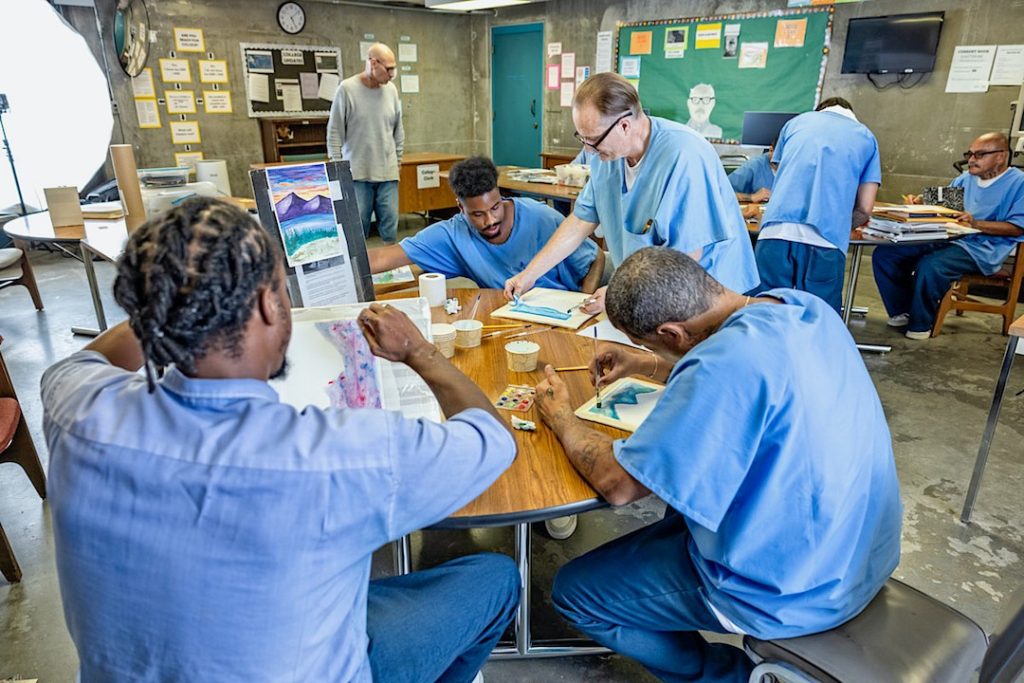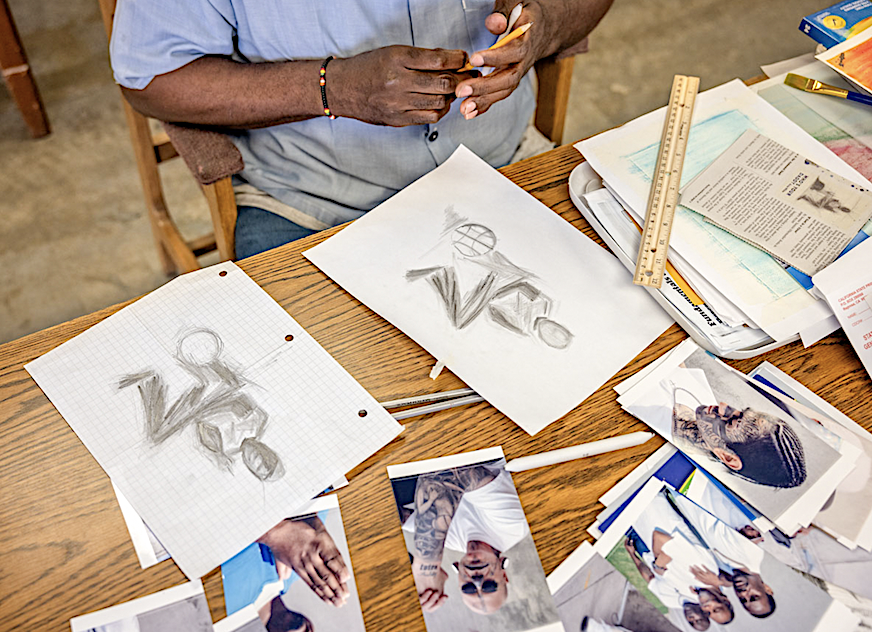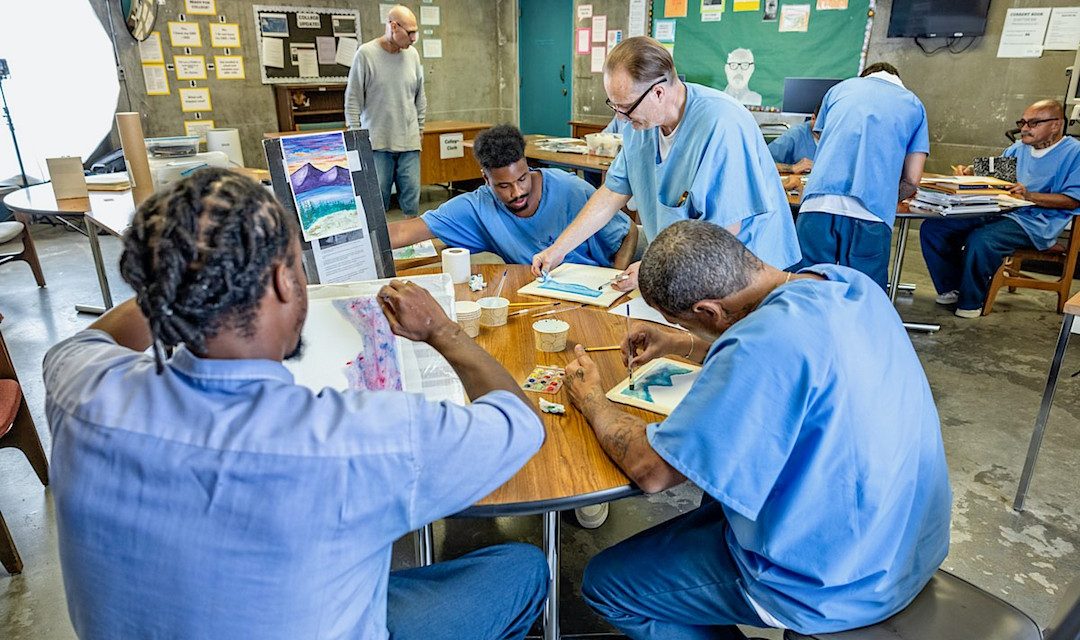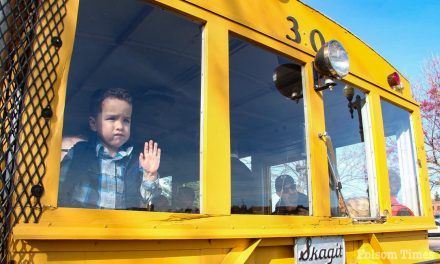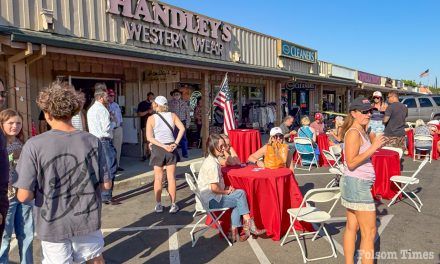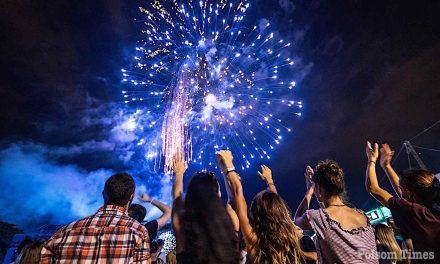Stephen Blumberg and Rachel Clarke spend most of their working hours running Sacramento State’s School of Music and the Department of Art, respectively, ensuring their faculty have the tools and resources they need to effectively teach their students.
Twice a month, however, the two department chairs travel to Folsom to work with a different type of educator: incarcerated individuals who are teaching or learning how to teach art classes to fellow prison inmates.
“The way it becomes clear by the end of a class how much everyone has grown through the whole experience, it’s just really moving and inspiring,” Blumberg said.
He and Clarke volunteer though the Prison Arts Collective (PAC), a San Diego State University-based program that is getting off the ground at Sac State and making a difference in the lives of program participants at California State Prison, Sacramento (CSP-SAC), commonly known as New Folsom prison.
Founder Annie Buckley says PAC is based on the principle that art is a human right. The program provides classes in art, creative writing, theater, and music to incarcerated individuals across California, helping them foster their creativity, build confidence, and develop new skills.
Buckley, a San Diego State University professor and associate dean, founded PAC in 2013, and it has since expanded to include partnerships with CSU San Bernardino, Cal Poly Humboldt, and now Sac State. Its programming includes guest artist workshops, multidisciplinary arts classes, and “arts facilitator” training for incarcerated peer leaders.
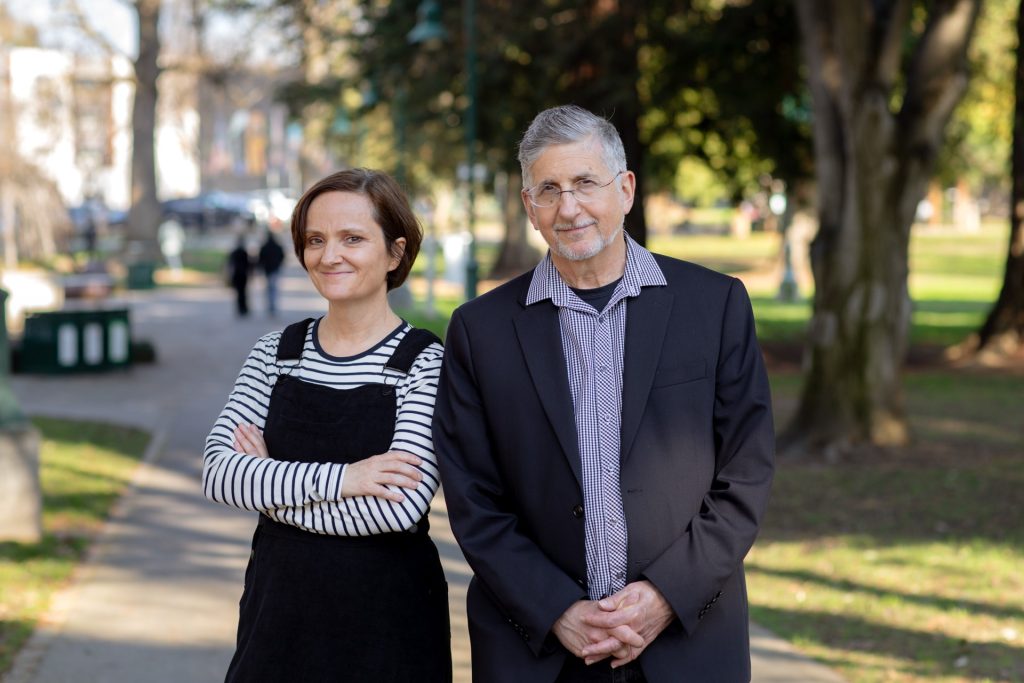
“It is so meaningful to witness the transformation in those who take part in our facilitator training and apprenticeship,” Buckley notes. “Over six months, they build on their own experience and gain the knowledge and confidence to teach, cultivating creative community from within the institution.”
Since the fall of 2022, Blumberg and Clarke have volunteered as mentors for the art facilitators in training, working with inmates who completed a 15-week correspondence course and lead classes for their peers in the prison.
During their visits, Blumberg and Clarke observe the peer facilitators’ classes, offering advice and feedback, and even do arts or writing demonstrations. They currently work with four to five peer facilitators in training, who in turn teach about 25-30 other participants.
“Some of them could become teachers in the future outside of the prison, but a lot of them are doing it to give back to their own prison community and to grow as artists,” Clarke said. “To be able to help them do that for their fellow inmates is pretty incredible.”
Mark Taylor can speak firsthand to PAC’s transformative impact. While serving a 26-years-to-life sentence at Ironwood State Prison, he participated in the facilitator training with Buckley and began leading creative writing classes.
Taylor had spent much of his time in prison advancing his education, including earning six associate degrees, and saw PAC as an opportunity to further his skills by getting formal training in developing curriculum and leading classes.
“The experience was amazing. One, just because of the team that came in. You could tell that they really had our best interest at heart,” he said. “I embraced an artistic side I didn’t know I had. We also built community within that group.”
As part of his work with PAC, Taylor wrote his life story, something he says that, along with the other educational and leadership work he had done, led to his release in 2018.
The skills and confidence he learned as part of PAC have played a major role in his life and career since then. Today, he is a volunteer with the Anti Recidivism Coalition, a life coach, and Youth Outreach Coordinator at Cal Poly Humboldt’s chapter of Project Rebound. In 2021, he helped launch a PAC program at Pelican Bay State Prison in Crescent City.
“There is a lot of merit to the peer-to-peer model,” he said. “When you have someone who was incarcerated and went through Prison Arts Collective and now came home, and is facilitating the classes, it makes it easier for the student to relate to the experience that I have.”
As department chairs, Blumberg and Clarke don’t currently teach courses in their respective departments at Sac State, so working with PAC allows them to, in a way, engage with students as they would in the classroom. They also get to model what it is like to be an educator, the importance of which became apparent at a recent graduation for participants who had completed their facilitator training, Clarke said.
“The participants spoke about what they’d learned in terms of the art, but they also spoke a lot about what their inmate colleagues – the facilitators – had taught them, and how much it meant to them,” she said. “It was an empowering revelation to the facilitators for them to hear how much their teaching was appreciated, and to fully understand how important the role of the teacher is.”
She and Blumberg hope to recruit more Sac State faculty to work as volunteer mentors or as paid teachers. They plan to present an exhibition of the artists’ work that will showcase the participants’ creativity and humanity to a wider audience.
“Creating art is like an ongoing conversation with yourself, but it’s a gift to the world as well,” Blumberg said. “Within those walls, creative expression is a path to freedom that can’t be taken away.”
“A vibrant community has emerged around these classes,” Clarke said, “creating special bonds that improve the inmates’ quality of life, self-confidence, and sense of well-being. Our time working with Prison Arts Collective has also enriched our lives and has been a wonderful learning experience for us as well.”
